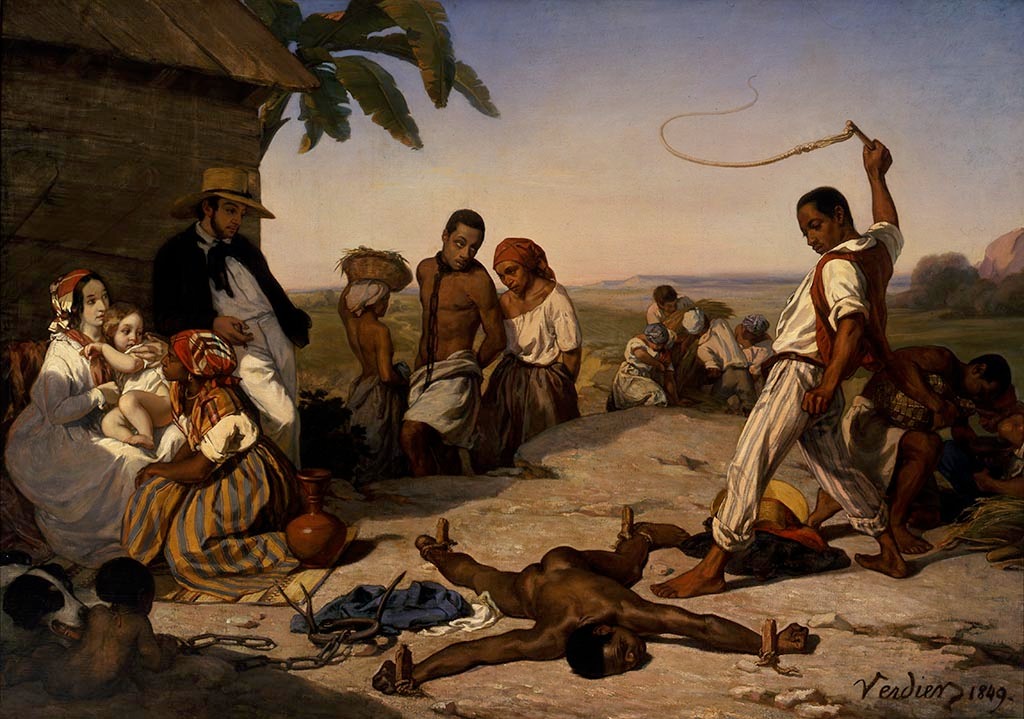
Marcel Verdier, a student of the noted French Neoclassical painter Ingres, submitted this nearly life-sized, graphic depiction of racial violence to the 1843 Paris Salon, presumably hoping to establish his reputation as a serious and accomplished painter. Verdier, who never witnessed such an event, gleaned the specifics of the scene from the many descriptions of the brutal treatment of enslaved workers in France’s Caribbean colonies that circulated in the mid-19th century. These narratives, brought back to the continent by visitors who were horrified by what they witnessed, drove a growing abolitionist sentiment.
The work was rejected by the Salon jury for its inherently political subject matter but was exhibited soon after at a special exhibition at the Bazar Bonne Nouvelle, a department store in Paris. Predictably, the shockingly violent scene drew critical attention. The piece was illustrated and described in detail in L’Illustration, Journal Universel (13, no. 1, 27 May 1843). The writer commented not only on the cruelty of the punishment but also on the casual indifference of the plantation owners, noting, “Only [the] child seems terrified…but it is already foreseeable that these groans of pain will become familiar to his ears, that his eye will become accustomed early on to these horrible spectacles, and that one day he too will, like his father, smoke his cigar peaceably while his Negroes are tortured.” Behind the victim stands a man, stripped at the waist and chained, apparently awaiting his own lashing. He looks toward the figure enacting the violence, ironically not the owner but another enslaved man tasked with carrying out his inhumane orders.
If Beating at Four Stakes in the Colonies was actually completed in 1843, why then is this canvas prominently dated 1849? Two theories have evolved to explain this detail. The first is that Verdier dated it one year after the French abolished slavery in its colonies (1848). He purposely placed the scene in an unspecified location so that his forceful anti-slavery statement could appeal to sympathetic audiences in places like the United States, where the institution persisted. The second theory is simply that Verdier completed a second, later version of the same subject. Infrared reflectography (IRR), an imaging technology used by conservators, reveals that the artist made significant changes to the painting in several places, so that this is the original composition and not a copy of an existing image.